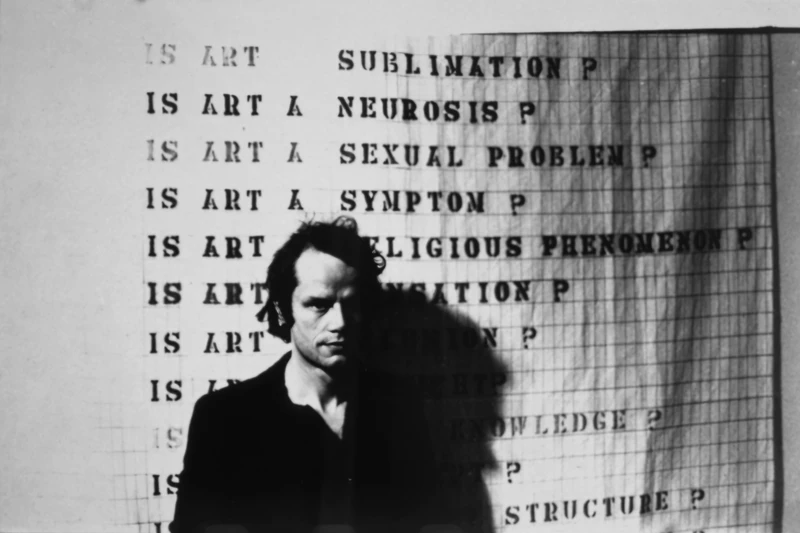Angel With a Gun: Homage to Guy Brett
10 May-15 Jun 2024
PV 9 May 2024, 6-8pm


Rarely seen works from the pioneering British critic, writer and curator’s private collection.
Sérgio Camargo, Lygia Clark, Carlos Cruz-Diez, Eugenio Dittborn, Jac Leirner, Cildo Meireles, Hélio Oiticica, Alejandro Otero, Lygia Pape, Mira Schendel, Jesús Rafael Soto and Regina Vater
Alison Jacques is delighted to announce Angel with a Gun: Homage to Guy Brett, an exhibition showcasing rarely seen works from the pioneering British critic, writer and curator’s private art collection. The exhibition’s title, Angel with a Gun, is taken from art historian Yve-Alain Bois’ preface to Carnival of Perception (2004), a book of selected writings by Guy Brett. With reference to Brett’s curiosity towards an ambiguous, 18th-century Latin American image of an angel holding a gun, Bois explains Brett’s ‘personal obsession’ with the struggle between opposites. The exhibition pays homage to Brett’s passion for Latin American art.
A distinctive voice in art criticism since the 1960s, Guy Brett (b.1942; d.2021) followed an independent path in mapping and interpreting contemporary art. Through Brett’s collection, we encounter his constant curiosity and insight accompanied by a disinterest in a market-led view; we experience Brett’s hope and belief in the ability of art to let us begin again.
Following an encounter in Paris in 1964 with Brazilian artist Sérgio de Camargo (b.1930; d.1990), whose disruption of the monochrome is seen through three works included in the exhibition, Brett became particularly interested in developments in Brazilian modernism. This was solidified by his first visit to Brazil in 1965, aged just 22-years-old, to view the São Paulo Biennial as art critic for The Times. There, he encountered artists including Lygia Clark (b.1920; d.1988) and Hélio Oiticica (b.1937; d.1980), with whom he formed close friendships and whose international reputations are owed in part to Brett’s rigorous, lifelong advocacy. Both artists are significantly represented in this exhibition. Clark’s rare and playful matchbox constructions, as well as her bichos (creatures) and trepantes (climbers) invite audience participation, as does Oiticia’s Parangolé (1966), an experimental cloak intended to be worn by dancing participants. What drew Brett to the work of artists like Oiticica and Clark was a faith in regeneration, in a creative practice that exceeds the body, that both reflects the conditions of the outside world and suggests that another world is possible.
Throughout his career, Guy Brett focused on discovering and exhibiting works that were excluded from Eurocentric art historical chronologies. While the British art world at the time cast their gaze towards white male American Pop art and Abstract expressionism, Brett turned his attention to experimental art movements, particularly those originating from Latin America. In a characteristically trailblazing manner, Brett was one of the earliest champions of pioneering women artists. Brett was integral to the Signals initiative, co-publishing the Signals Newsbulletin in 1964 and helping to establish the now legendary gallery, Signals London (1964-66), which manifested an interdisciplinary approach and brought artists to London from across the world. Brett’s ground-breaking 1990 exhibition, Transcontinental: Nine Latin American Artists, introduced artists including Cildo Meireles (b.1948), Regina Vater (b.1943), Eugenio Dittborn (b.1943) and Jac Leirner (b.1961) to the UK. The same works by Vata and Leirner that featured in Transcontinental, Vata’s Nature Morte (1987-1988) and Leirner’s The One Hundreds (Signatures) (1987), are shown in this current exhibition. Brett described Transcontinental as encompassing ‘the relation, the tension, between the abstract/void and the contingent, localised, historical, urgent and conflicted’.
Angel With a Gun: Homage to Guy Brett press release
Download